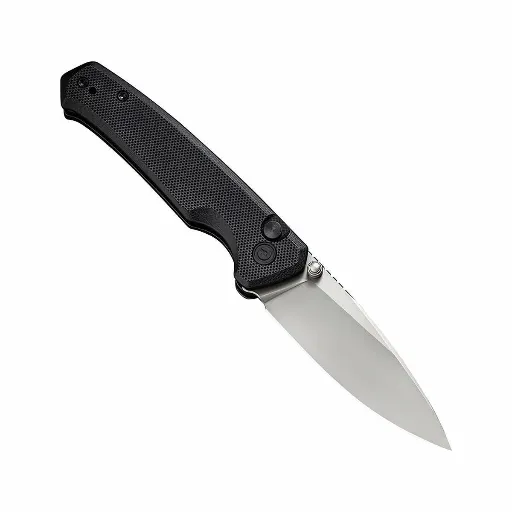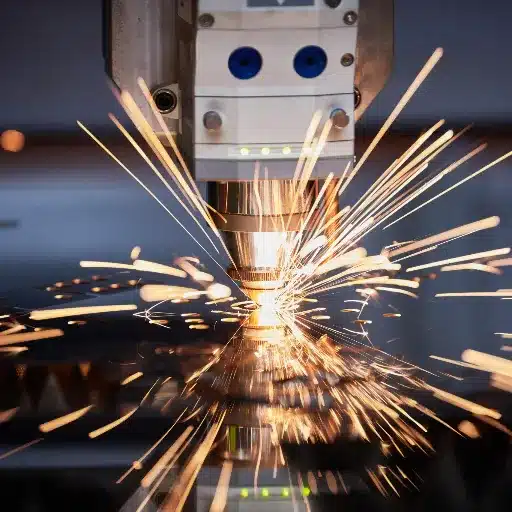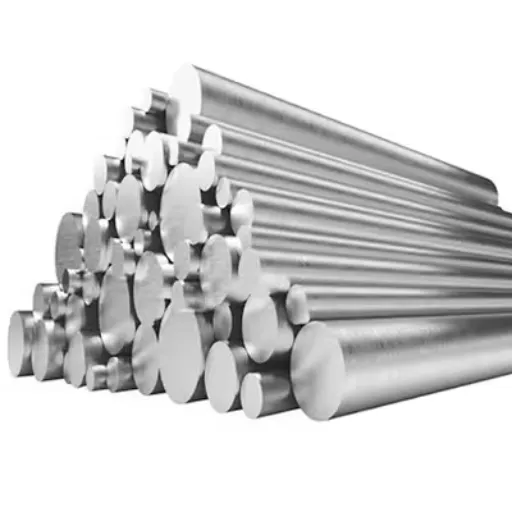Stainless steel forgings are durable components that meet the needs of a wide range of industries. These components need to be strong and reliable. Therefore, they are manufactured through an intensive process of stainless steel forging, which is perfected over decades. Stainless steel forging detects challenges and develops the right strategies to achieve effective quality results. As you read further, you’ll know everything needed to achieve top-notch quality in your product. This article is tailored for both professionals and beginners. Your levels of understanding do not matter since it will bring you up to speed on the methods of forging, types of stainless steel forgings, and benefits of the process. Once you are done with this article, you’ll learn valuable principles for achieving exceptional quality in stainless steel forgings.
What Makes Stainless Steel Ideal for Forging?
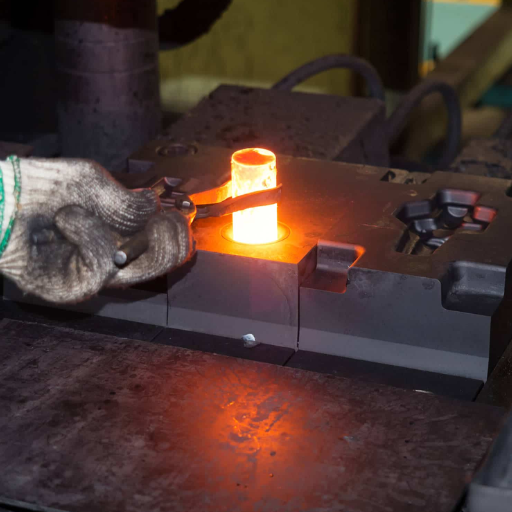
The T303 stainless-steel alloy’s weldability and machinability allow precise components to be fabricated. At the same time, its strength, corrosion resistance, and versatility make it ideal for use within the automotive, aerospace, and shipping industries. These industries greatly benefit from stainless steel’s long-lasting resistance to rust and stains. Stainless steel’s ability to withstand high temperatures and stress without compromising structural integrity, on the other hand, makes it suitable for more demanding applications. Additionally, stainless steel offers excellent precision in welding and fabrication, thus creating stronger, long-lasting components.
Exceptional Strength and Corrosion Resistance Properties
Stainless steel is highly regarded due to its strength and remarkable corrosion resistance. Because of stainless steel’s high tensile strength can also withstand intense durability under extreme conditions like marine or chemical settings. The chromium in stainless steel reacts with oxygen to form a thin protective oxide that prevents rust and corrosion, making it much easier to maintain. Advancements in alloy compositions that do not allow pitting or crevice corrosion further enhance lifecycle while reducing maintenance efforts. Because of this, stainless steel continues to perform reliably within construction, medical devices, and nuclear energy industries.
Common Stainless Steel Grades for Forging Applications
- 304 Stainless Steel
Description: This type is famous for its high corrosion resistance and versatility. It is widely used in applications requiring durability and hygiene.
Key Properties:
- Chromium content: 18-20%
- Nickel content: 8-10.5%
- Tensile Strength: ~515 MPa
- Maximum working temperature: ~870ºC
Applications: This type best suits food processing apparatus, architectural elements, and chemical tanks.
- 316 Stainless Steel
Description: This type is mainly preferred in more aggressive environments because of its high resistance to pitting and crevice corrosion due to its Molybdenum content.
Key Properties:
- Chromium content: 16 – 18%
- Nickel content: 10 – 14%
- Molybdenum content: 2 – 3%
- Tensile Strength: ~515 MPa
- Maximum working temperature: ~870 – 925ºC
Applications: Used more frequently in appliances like marine equipment and medical implants as wellas in chemical handling systems.
- 410 Stainless Steel
Description: This type has a martensitic grade, which provides it with good hardness and wear resistance. This makes it generic and usable in high-strength components.
Key Properties:
- Chromium content: 11.5 – 13.5
- Tensile Strength: ~480 MPa
- Additional heat treatment increases toughness.
Applications: Best suited for cutlery, valves, and turbine components.
- 430 Stainless Steel
Description: This type of steel has a ferritic structure which provides moderate corrosion resistance is achieved economically.
Key Properties:
- Chromium content: 16 – 18%
- Tensile Strength: ~450 MPa
- Compared to austentic grades, this types has reduced ductility and is nonhardenable.
Applications: Used frequently within automotive trims, industrial dishwashing machines, and kitchen appliances.
These grades are usually selected because of their particular mechanical traits, protection against corrosion, and capability to be forged.
Comparing Stainless Steel to Carbon Steel in Forging
Carbon steel and stainless steel have their pros and cons; however, in terms of corrosion resistance, stainless steel triumphs, especially in places with high moisture and other damaging environments. With high chromium content, durability, and longevity come effortlessly. On the other hand, Carbon steel is more economical, easier to forge, and has a high tensile strength, which makes it a popular choice, although it is far less corrosion-resistant than stainless steel. Ultimately, the choice comes down to intended use – for high-durability environments, stainless steel works best, and for contexts needing strength at lower costs, carbon steel excels.
How Does the Stainless Steel Forging Process Work?

When forging with stainless steel, the material must first be heated above the recrystallization temperature for the pouring stage. Like all forging processes, shaping takes place through compression with processes such as hammering or pressing. Not only does the shape improve, but the strength, uniformity, and resistance to wear of the steel also increase. Once forged, the component can then cool down and go through the rest of the processes, such as heat treatment or more machining, until the desired dimensions are reached.
Critical Forging Temperature Ranges for Stainless Steel
Stainless steel has a critical forging temperature range, which differs with each grade being worked on. Here are some noted ranges for certain types of stainless steel:
- Austenitic Stainless Steels (e.g. ,304, 316 )
Forging temperature range: 1900°F – 2200°F (1038°C – 1204°C)
The material must be kept above 1700°F (927°C) to ensure no cracking or loss of ductility occurs during forging.
- Martensitic Stainless Steels (e.g. 410, 420)
Forging temperature range: 1800°F – 2100°F (982°C – 1149°C)
Extended periods of exposure to hotter regions must be avoided if mechanical properties are to be preserved.
- Ferritic Stainless Steels (e.g., 430, 434)
Forging temperature range: 1500°F – 1800°F (815°C – 982°C)
Grain coarsening is likely to happen from overheating above the range.
- Duplex Stainless Steels (e.g. 2205, 2507)
Forging temperature range: 1870°F – 2100°F (1021°C – 1149°C)
Control heating and gradual cooling should avoid phase imbalance to achieve uniform temperature throughout the material.
Subsequent treatments, such as annealing or quenching, can be tailored to the furnace-cooled components to achieve desired results. Care should be taken in following specific manufacturer recommendations for each alloy.
Open Die vs. Closed Die Forging Methods
The difference between open-die and closed-die forging methods is the tools and the achievable precision. Open die forging allows for more significant parts, such as custom or oversized pieces, but at the expense of having less intricate matching tolerances. The metal is shaped during open-die forging, placed between flat or slightly contoured dies, and compressed repeatedly. Closed die forging uses custom-shaped dies that completely encase the metal and, therefore, is more expensive because of the expensive tooling. However, because less machining is required, the design can be manufactured with great accuracy, which brings in profit during mass production of smaller, complicated parts that require high strength.
Grain Flow Optimization in Forged Stainless Steel Parts
Optimizing grain flow in forged stainless steel components is vital to improving tensile strength, fatigue, and overall mechanical endurance. Comparatively, forging is the most favorable method of aligning a metal’s grain structure as it accompanies the predominant geometric shape of the part; this makes the part’s performance under stress significantly better than other techniques, such as casting and machining. Based on my personal experience, some of the essential optimal grain flow strategies are controlling the forging temperature (for stainless steel ranges between 1900°F and 2300°F), achieving adequate deformation ratios (3:1 or more significant for better grain refinement), and suiting die design to align the grain flow direction to principal load bearing axes. Defect reduction and quality control are enhanced with superior simulation aids and process monitoring, improving alignment accuracy.
Which Stainless Steel Grades Are Best for Different Forging Needs?

Forging and its processes have been streamlined by the easier manipulation of stainless steel owing to its durability, mechanical properties, and corrosion resistance. This blog discusses how different stainless steel grades can be tailored for different forging objectives, which is accomplished by analyzing the distinct attributes of various grades and their usefulness. Ideal grain flow in stainless steel is achievable through advanced forging techniques, but having the perfect grade for a specific environment is also an important consideration. As austenitic, martensitic, and duplex stainless steels are dealt with within this article, it brings together all the practical considerations that allow the user to make informed decisions for various forging works.
300 Series Stainless Steel: Properties and Forging Characteristics
Due to its broad usage range, the 300 series of stainless steel is the easiest to manipulate in terms of application. These alloys are primarily austenitic and contain very high chromium and nickel content. Non-magnetic in their annealed state, the 300 alloys also exhibit good formability and weldability to accompany their excellent corrosion-resistant feature.
Optimal results for the 300 series stainless steels require special attention to the forging process. I always focus on the heating stage and ensure the material is heated somewhere around 2000°F to 2300°F (1093°C to 1260°C). This temperature range provides the required deformation while ensuring the risk of cracking is minimal. On the other hand, overheating is avoided to ensure no damage is done to the alloy’s structure. Forcing slow cooling after the forging step ensures the desired mechanical properties are maintained, and any remaining stresses can be dealt with by annealing. With that level of understanding, there is no doubt I can handle any forging project involving 300 series stainless steel and be guaranteed durability and performance.
400 Series Stainless Steel: Strengths and Applications
From my perspective, it is well known that the 400 series stainless steels offer the highest strength and wear resistance because of their high chromium and very low nickel content. Their martensitic structure offers an impressive hardness level, making it ideal for cutlery, automotive parts, and industrial tools. While their corrosion resistance is very good for mild conditions, harsh environments require regular maintenance to ensure no rust builds up. These alloys are very helpful when strength, durability, and cost-effectiveness are needed.
Duplex Stainless Steel Forging Process Considerations
Successful forging of duplex stainless steel depends upon carefully balancing temperature, strain rate, and post-forge heat treatment. In my case, I try to keep forging temperatures at a reasonable level, between 1900°F and 2100°F, as going above this level can damage the material’s microstructure. Other things to consider, too, include defects from rapid heating or uneven cooling. Furthermore, post-forge annealing allows the material’s duplex structure to be restored while maintaining optimal strength and corrosion resistance.
What Challenges Occur When Forging Stainless Steel?
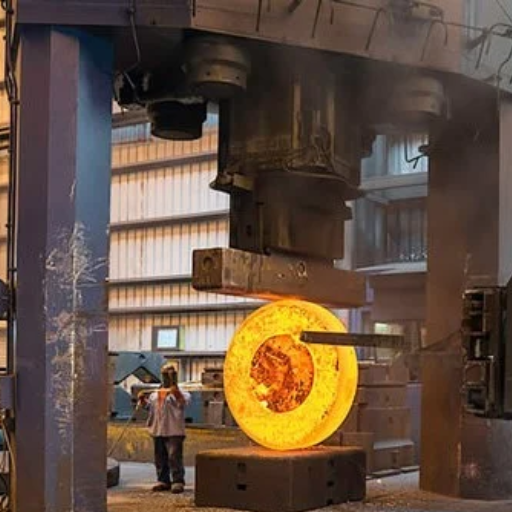
Due to distinct properties, forging stainless steel has a fair share of obstacles. High forging temperatures take a lot of attention to avoid overheating or grain growth. Gaining stainless steel work hardening makes deformation manipulative, increasing the required force and energy for forging. Inappropriate control and pushing techniques can cause cracks, distortion, and melting. These problems can be solved with precise temperature management, specialized forging practices, and heat treatment needed to maintain the material’s desired features.
Overcoming Higher Forging Temperatures with Austenitic Stainless Steel
To solve the problem, the temperature bounds should be targeted around the higher phenomenon austenitic stainless steel forging range. Practiced optimal forging attempts must be followed in parallel. In practice, for most austenitic stainless steels, the preferred forging temperature varies from 1900°F (1038°C) to 2100°F (1149°C). As long as the temperature is maintained, ductility needed for deformation can be achieved, along with the minimization of grain growth.
Practices such as slowly heating the metal to a specific temperature without keeping it at a high temperature for too long reduce the chances of cracks or distortions developing. Post-forging heat treatments like annealing are crucial for mitigating internal stresses and restoring the material’s ability to resist corrosion. Generally, for most austenitic grades, annealing is done at roughly 1900°F (1038°C), which is then followed by rapid cooling through methods such as water or air quenching to avoid carbide precipitation while optimizing desired properties.
Consistent quality and characteristics of austenitic stainless steel are ensured during the forging process through precise temperature control, well-maintained equipment, and following the technical parameters set.
Managing Martensitic Stainless Steel Forging Complexities
Mastery in forging martensitic stainless steel comes from a deep understanding of how temperature, timing, and individual heat treatment processes interact. Based on my experience, achieving the appropriate hardness and strength can only be achieved through precise austenitizing at or around temperatures 1800 and 1950°F (982 – 1066°C) with rapid quenching to minimize excessive grain growth. Additionally, some efforts must be made to balance toughness and corrosion resistance during tempering. Striking a balance between these different parameters minimizes the challenges of cracking or distortion while ensuring the results are of the highest quality.
Solutions for Common Forging Defects in Stainless Steel
When trying to resolve the most common defects in forging stainless steel, I look at the reason why it occur so I can make target corrections to the processes involved in forging:
- Cracks and Fractures: Most issues arise from improper heating modes or too much effort applied while trying to forge. I ensure that the forging temperature does not exceed the recommended limits of 1900°F to 2300°F, which is about 1038-1260°C. Otherwise, my workpiece will undergo excessive cooling, which might cause thermal stress. Pre-heating dies, and other tools are another way to minimize the chances of thermal shock.
- Distortion and Warping: Poor die design can lead to distortion and uneven cooling. I am more mindful of how I perform the cooling tasks—it can be air cooled gradually and uniformly or using specially designed protective mediums. Proper die alignment is crucial if uniform pressure is applied to the workpiece during forging.
- Surface Scale and Oxidation: An oxidizing reaction happens when the workpiece is exposed to high temperatures for a long period without adequate protection. During heating, protective coatings are applied, or inert atmospheres are utilized. Descale procedures like shot blast cleaning or chemical treatments can restore the surface finish after the forging process.
- Internal Defects (e.g., Porosity or Seams): Forging seams arise because of too little forging pressure and poor material preparation. I go for larger forging ratios of about 4:1 to 6:1 and thoroughly attend billet preparation by cleaning and uniformly heating the billet.
Adhering strictly to these parameters and modifying them according to the specific alloy and product needs, I can solve these defects while obtaining the best results in forged stainless steel components.
How Do Different Forging Techniques Affect Stainless Steel Properties?
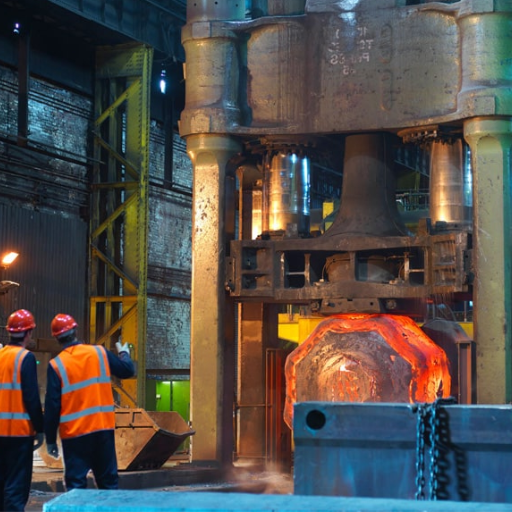
The techniques used in forging significantly affect the steel’s microstructure, quality, and mechanical properties. An example is open-die forging, which facilitates excellent structural integrity and uniform grain flow and is suitable for significant components. On the other hand, closed-die forging enables intricate parts to be made with high precision and superior surface finish. Also, cold forging improves dimensional accuracy and surface hardness, while ductility and toughness are enhanced with hot forging due to the refined grain structure at high temperatures. Stainless steel components can be tailored to meet specific performance expectations by choosing the proper technique.
Impact of Forge Welding on Stainless Steel Integrity
As I learned from my studies, protecting the structure of stainless steel dramatically depends on forge welding. This technique ensures a positive metallurgical bond while controlling the contamination at the weld joint, making it efficient for high-strength applications. With adequate control and temperature monitoring, stainless steel’s mechanical properties and corrosion resistance are precisely maintained. Because of these features, the components produced through this process are durable yet easy to utilize.
Mechanical Properties Enhancement Through Proper Forging
Correct forging methods are essential to improving the mechanical properties of a material, especially metals such as stainless steel. Defects in metallic materials are enhanced and eliminated during the forging process’s grain structure refinement. Uniformity in the metal composition is guaranteed through proper forging, resulting in higher ductility and fatigue resistance. Better hardness and wear resistance are acquired from controlled forging conditions, such as applying temperature and force, which make the material useful in harsh industrial settings. In conclusion, proper forging processes enhance the performance, durability, and reliability of components exposed to stress over time.
Effects of Forging on Stainless Steel’s Microstructure
Forging has an essential effect on stainless steel’s microstructure by increasing the uniformity of the grain structure. This process removes voids and decreases porosity, enhancing mechanical properties such as strength and toughness. Internal voids and porosity progressively increase for every grain refinement cycle to an optimal level of complexity before the controlled deformation during forging realigns the grain flow. The result is increased fatigue resistance and ductility. It also helps optimize the wear resistance and durability of the material, making it appropriate for critical applications in high-stress environments.
Where Are Stainless Steel Forgings Commonly Used?
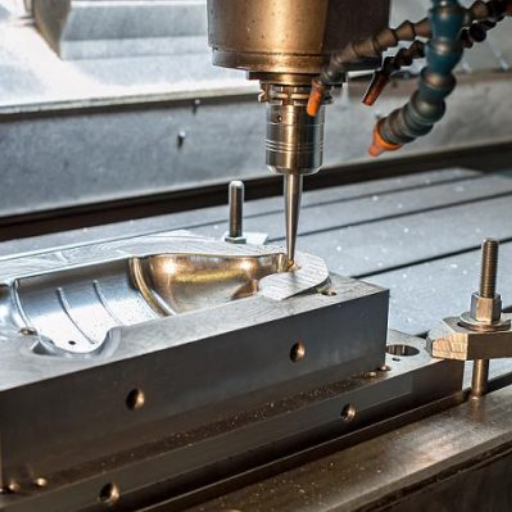
Industries such as aerospace, automotive, oil and gas, chemical manufacturing, and medical equipment leverage forgings owing to their high strength, long-lasting durability, and corrosion resistance. Different industries utilize these forgings for aircraft landing gear, vehicle components, fittings, valves, and even surgical instruments. Performance is critical in these applications; stainless steel forgings excel while others fail.
Industrial Applications for 304 Stainless Steel Forgings
304 stainless steel forgings are commonly used across many industries due to the material’s ability to withstand corrosion, high strength, and multifaceted application options. These forgings are employed in many industries, including construction, food processing, and chemical manufacturing. Notable industries include:
- Food Equipment Appliances: 304’s ability to resist corrosion and ease in cleaning surfaces makes it ideal for food-grade tanks, piping, and appliances.
- Chemical Storage: Most tanks, reactor vessels, and pipes require some form of protective covering, and 304-grade stainless steel is resistant to extreme acidic, alkaline, and chlorine conditions.
- Architecturally, it comprises mixed stainless steel, which usually has more charm for the harshest environments. The Polish aesthetic is handy when considering railings, decorative elements, or cladding.
Technical Relevant Factors:
- Corrosion Resistance: For oxidation, the limit is 1600F or 870C.
- Yield Strength: 205 Megapascals, equivalent to 30,000 psi.
- Tensile Strength: Approximately 515 Mpa or 75,000psi
- Hardness: Typical 95 HRB is less than standard.
- Composition: Endurance is enriched through bonus chromatid, and 304 stainless steel is known for having 18% and 8% nickel.
Enduring performance is achieved across diverse industries simply because of the robust properties that describe it.
316 SS Forged Parts in Marine and Chemical Environments
316 stainless steel forged parts and components are ideal for marine and chemical industries due to their excellent durability and corrosion resistance. 316 SS comes with added molybdenum that gives it stronger protection against pitting and crevice corrosion in harsh, chloride-rich chemical environments. It also increases oxidation resistance and improves reliability when exposed to industrial chemicals and seawater. This grade is commonly utilized in components, valves, valves, pump fittings, and other marine hardware where extreme durability is needed.
Specialized Applications Requiring High-Quality Stainless Steel Forgings
The manufacturing sector that involves aerospace, oil, and gas relies heavily on high-quality stainless steel forgings due to their importance in pressure vessels, turbine blades, and pipeline fittings. Forged stainless steel’s excellent mechanical properties and stainless nature make it multifunctional in several appliances, even those that are high-pressure and corrosive. With the help of innovative forging techniques, the unforgiving criteria of these applications can easily be met.
References
- A Guide to Stainless Steel Forgings | 304 SS – Great Lakes Forge
- Stainless Steel Forgings | Forging Process, Properties – Steel Pro Group
- Stainless Steel Forging Unveiled – CXIN Forging
Frequently Asked Questions (FAQ)
Q: What are the different types of stainless steel commonly used in the forging process?
A: The most common types of stainless steel used in forging include austenitic grades (like type 304 and 316 stainless steel), martensitic grades, ferritic grades, and precipitation-hardening grades. Each series of stainless steel offers distinct properties suitable for different applications. Austenitic stainless steels are highly formable and provide excellent corrosion resistance, making them popular for food processing equipment. Martensitic grades provide greater hardness and strength, which is ideal for cutting tools. Ferritic stainless steels offer good corrosion resistance at a lower cost, while precipitation-hardening grades deliver exceptional strength and moderate corrosion resistance for aerospace components. Selecting the correct grade of stainless steel ensures your forged components meet specific performance requirements.
Q: What are the main benefits of stainless steel forgings compared to other manufacturing processes?
A: Stainless steel forgings offer several advantages over other manufacturing processes. First, they provide superior mechanical properties with enhanced strength, toughness, and fatigue resistance due to the refined grain structure developed during forging. Second, the excellent corrosion resistance of stainless steel makes forgings ideal for harsh environments. Third, forgings typically have greater structural integrity with fewer defects than cast parts. Fourth, despite higher initial tooling costs, stainless steel forgings can be more economical for medium to high-volume production runs. Finally, forgings are used in critical applications where failure isn’t an option, such as aerospace components, valve bodies, and medical implants, due to their reliability and performance consistency. The combination of material properties and the forging process results in components that can withstand extreme conditions while maintaining dimensional stability.
Q: How does the grade of stainless steel affect the forging process and final product quality?
A: The grade of stainless steel significantly impacts the forging process parameters and final product performance. Higher nickel content grades like 316 stainless steel require higher forging temperatures and forces but deliver superior corrosion resistance in chemical environments. Martensitic grades are more straightforward to forge but need precise heat treatment afterward to achieve the desired hardness. The chromium content across different grades affects forgeability, with higher chromium grades requiring more specialized equipment. Each grade exhibits different flow characteristics during forging, influencing die design and fill patterns. Manufacturers must consider these variations when selecting materials to produce high-quality stainless steel forgings. The final mechanical properties, corrosion resistance, and service temperature capabilities are directly linked to the specific grade chosen, making proper material selection critical for application success.
Q: What stainless steel inventory should forging companies maintain to meet diverse customer needs?
A: Forging companies should maintain a wide range of stainless steel inventory to serve various industries efficiently. This should include popular austenitic grades (304, 316, 321) for general applications, martensitic grades (410, 420) for components requiring hardness, precipitation-hardening grades (17-4PH) for high-strength applications, and specialty grades for extreme environments. The stock should be available in various forms, including billets, bars, and ingots in standard diameters and lengths. Maintaining this diverse inventory allows forging companies to respond quickly to customer needs without long lead times from mills. Many successful forging operations also track material usage patterns to optimize inventory levels based on seasonal demands. Additionally, having testing capabilities to verify material composition ensures quality control throughout the production process, guaranteeing that the final stainless steel products meet exact specifications.
Q: How are different types of stainless steel forgings used across various industries?
A: Stainless steel forgings find applications across numerous industries due to their exceptional properties. In aerospace, precipitation-hardened stainless forgings create critical engine components and structural parts requiring high strength-to-weight ratios. The oil and gas sector relies on 316 stainless steel forgings for valves, flanges, and fittings that resist corrosion in harsh offshore environments. Medical industries utilize clean-melted stainless forgings for surgical instruments and implants, benefiting from their biocompatibility. In food processing, austenitic stainless forgings create sanitary equipment components. The automotive industry employs stainless forgings for exhaust components and turbocharger parts exposed to high temperatures. Nuclear facilities depend on specialized stainless grades for radiation-resistant components. Marine applications feature stainless forgings in propeller shafts and hardware due to their resistance to saltwater corrosion. This versatility demonstrates why stainless steel is used extensively across critical industries requiring durability, corrosion resistance, and reliability.
Q: What challenges exist when welding stainless steel forged components?
A: Welding stainless steel forged components presents several challenges. First, chromium carbide precipitation can occur during welding, leading to sensitization and reduced corrosion resistance along heat-affected zones. Second, different thermal expansion rates between stainless steel types can cause distortion and residual stress. Third, austenitic stainless steels are particularly susceptible to hot cracking during welding. Fourth, proper shielding gas coverage is critical to prevent atmospheric contamination that could compromise weld integrity. Unlike forge welding stainless (which isn’t typically done), conventional welding methods require careful parameter control. Proper filler material selection, pre-weld cleaning, controlled heat input, and post-weld heat treatments are essential to overcome these challenges. Many manufacturers develop specific welding procedures for each grade of stainless steel. Welded stainless steel forgings can maintain mechanical properties and corrosion resistance throughout the joined areas.
Q: What are the key differences between stainless steel open and closed steel forging?
A: Stainless steel open-die forging and closed-die forging represent two distinct manufacturing processes with significant differences. In open-die forging, the metal is worked between flat or simply shaped dies that don’t ultimately constrain the material, allowing the metal to flow in multiple directions. This method is ideal for large, simple shapes, custom one-off parts, and when establishing preliminary grain structure before closed-die operations. Conversely, closed-die forging uses matched dies that completely enclose the workpiece, forcing the metal to conform to specific cavities. This results in tighter tolerances, more complex geometries, and less material waste, though tooling costs are substantially higher. Stainless steel open-die forgings typically require more secondary machining but offer lower initial tooling investments. The choice between these methods depends on production volume, component complexity, tolerance requirements, and budget considerations. Both processes can produce high-quality stainless steel forgings when executed adequately with appropriate die designs and process controls.
Q: What factors influence the cost of stainless steel forging projects?
A: Multiple factors influence the cost of stainless steel forging projects. Material selection is primary, with specialized grades like duplex or super austenitic stainless steel commanding premium prices over standard grades. Component complexity significantly impacts die design and manufacturing costs, with intricate geometries requiring sophisticated multi-stage tooling. Production volume affects per-unit costs through amortization of tooling expenses—higher volumes typically result in lower per-piece costs. Secondary operations like heat treatment, machining, and finishing add considerable expense, especially when tight tolerances are specified. Equipment requirements also factor in, as certain stainless steel alloys, demand higher forging temperatures and pressures, necessitating more specialized equipment—quality control requirements, including non-destructive testing and material certifications, further influence overall project costs. When evaluating stainless steel forging needs, manufacturers should consider these factors holistically rather than focusing solely on per-pound material costs to assess project viability and pricing accurately.
Q: How can manufacturers ensure optimal corrosion resistance of stainless steel forgings?
A: Ensuring optimal corrosion resistance of stainless steel forgings requires attention throughout manufacturing. First, proper material selection is crucial—choosing the appropriate grade of stainless steel for specific environmental conditions (316 stainless steel for marine applications, for example). Second, controlling forging temperatures is essential, as overheating can lead to chromium carbide precipitation that compromises corrosion resistance. Third, implementing proper post-forge heat treatments, particularly solution annealing followed by rapid cooling, helps dissolve carbides and restore the passive chromium oxide layer. Fourth, surface finishing techniques like pickling and passivation remove contaminants and enhance the protective oxide film. Fifth, preventing cross-contamination with carbon steel during processing prevents iron particle embedding that could initiate corrosion. Finally, proper handling and storage protect finished parts from environmental contaminants. Manufacturers who carefully control these factors can produce stainless steel forgings with optimal corrosion protection for demanding applications in chemical processing, offshore environments, and medical implementations.

